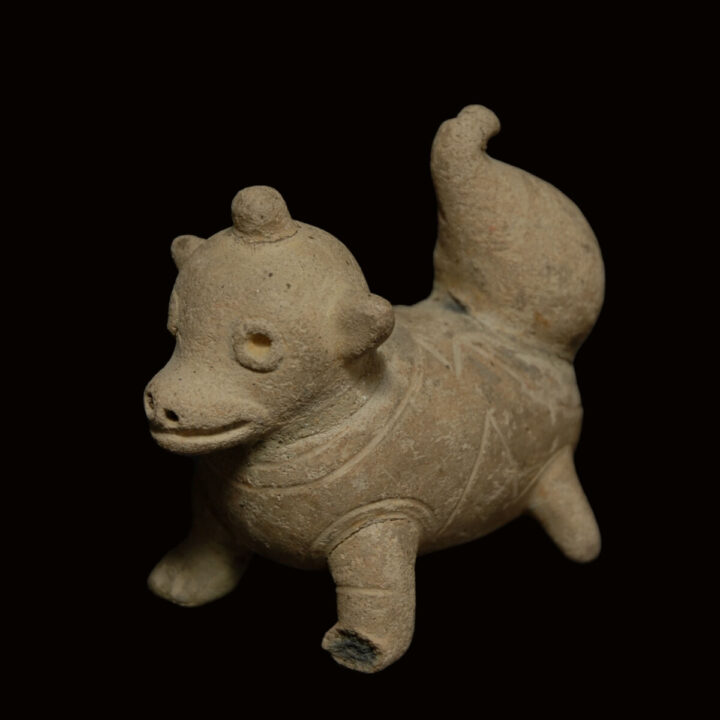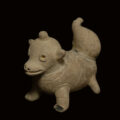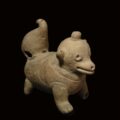Published Tumaco-La-Tolita Terracotta Dog with Okarina Function
Culture: Pacific Coast of South Colombia and North Ecuador/Tumaco-La-Tolita Culture
Period: 300 B.C. to 300 A.D.
Material: Terracotta
Dimensions: 10.2 cm long
Price: Sold
Ref: 11096
Provenance: Austrian private collection Prof. Josef Mairitsch (1938-1994) with the inventory number M 168. Acquired between 1960 and the early 1980s. Thence in the family estate. With copies of the inventory list and catalogue page.
Condition: Tail, both forepaws and hair bun reattached, otherwise very beautifully preserved.
Description: Stylized terracotta statuette of a dog with a massive body and short legs of the Tumaco-La-Tolita culture. The animal has protruding ears and a hair bun, which proves that it was domesticated. The eyes are round and pierced. Striking is the also the very thick tail, which is raised and rolled into a small volute on top. The body is decorated with incised patterns. With the drilled blowhole at the back the statuette could be used as an okarina (flute). Through the finger holes on the edge of the tail and at the back of the neck the tones could be varied. The dog statuette is published in: Josef Mairitsch “Columbus am Wörthersee. Amerika vor Columbus.” Catalogue for the special exhibition of the cultural department of the state capital Klagenfurt from 1 June to 31 October 1992, p. 46, no. 3.11. In the catalogue the dog is referred to as “fat dog”, which was domesticated in Ecuador as early as 500 B.C. and is said to be a relative of the Chinese hairless dog.





